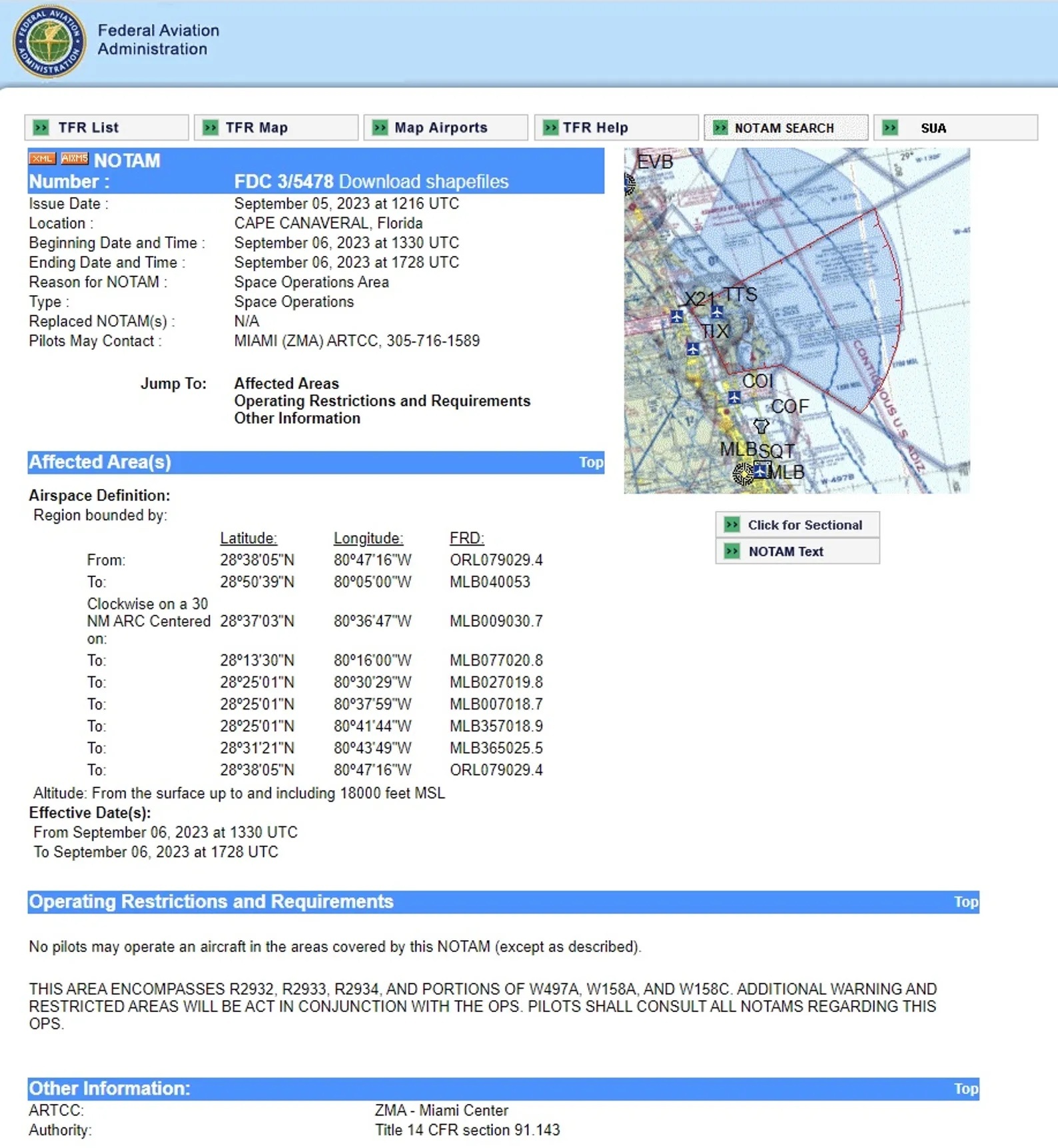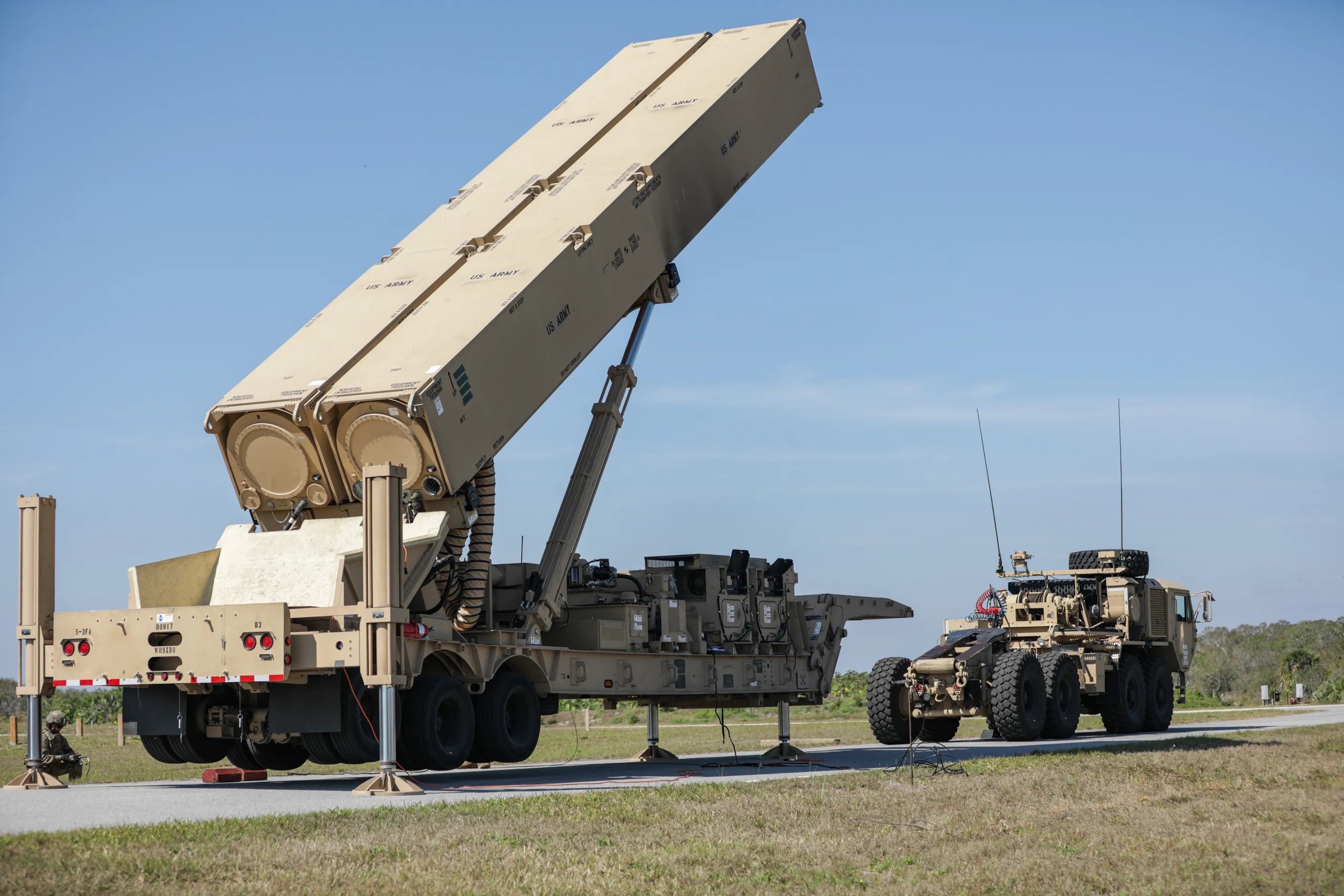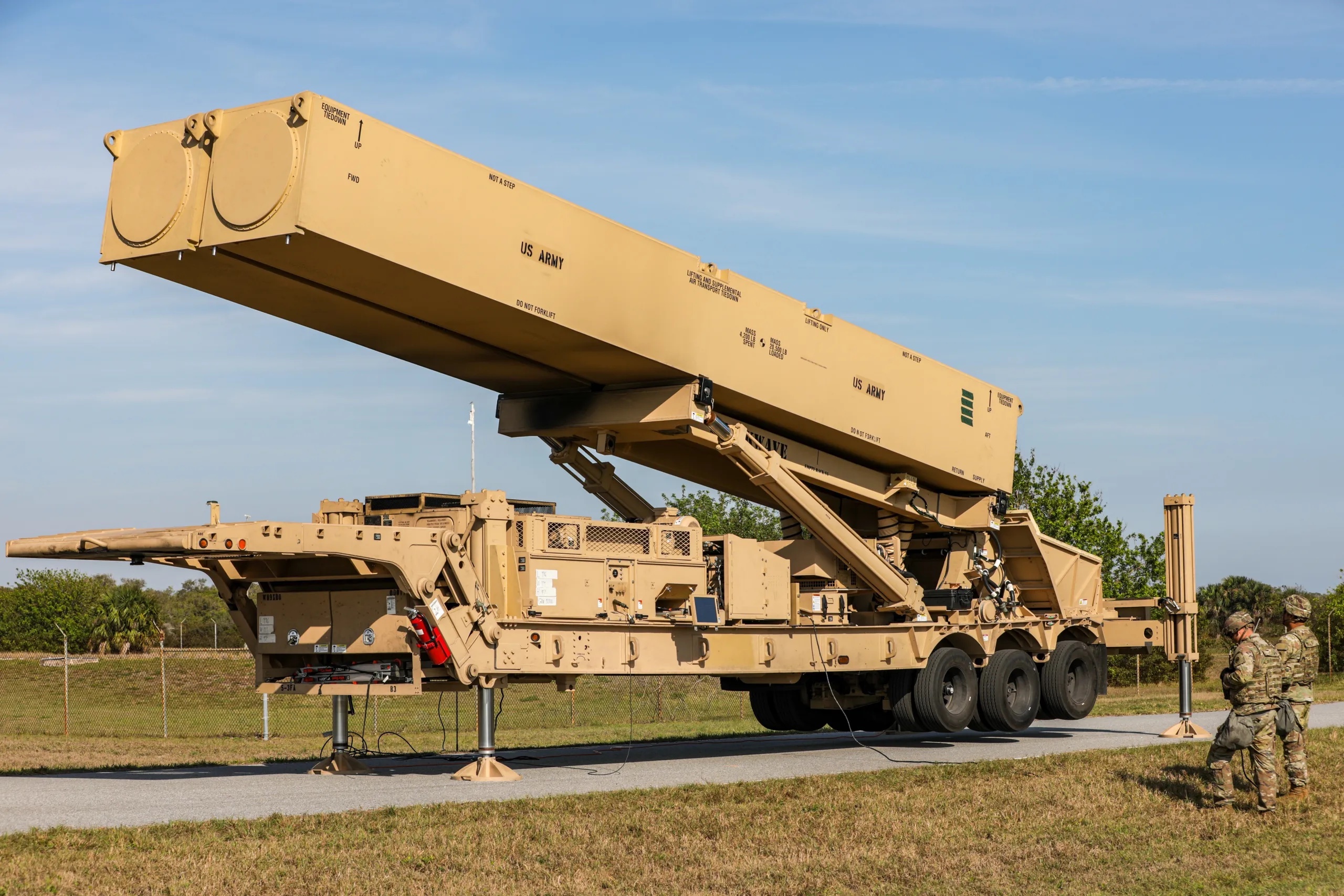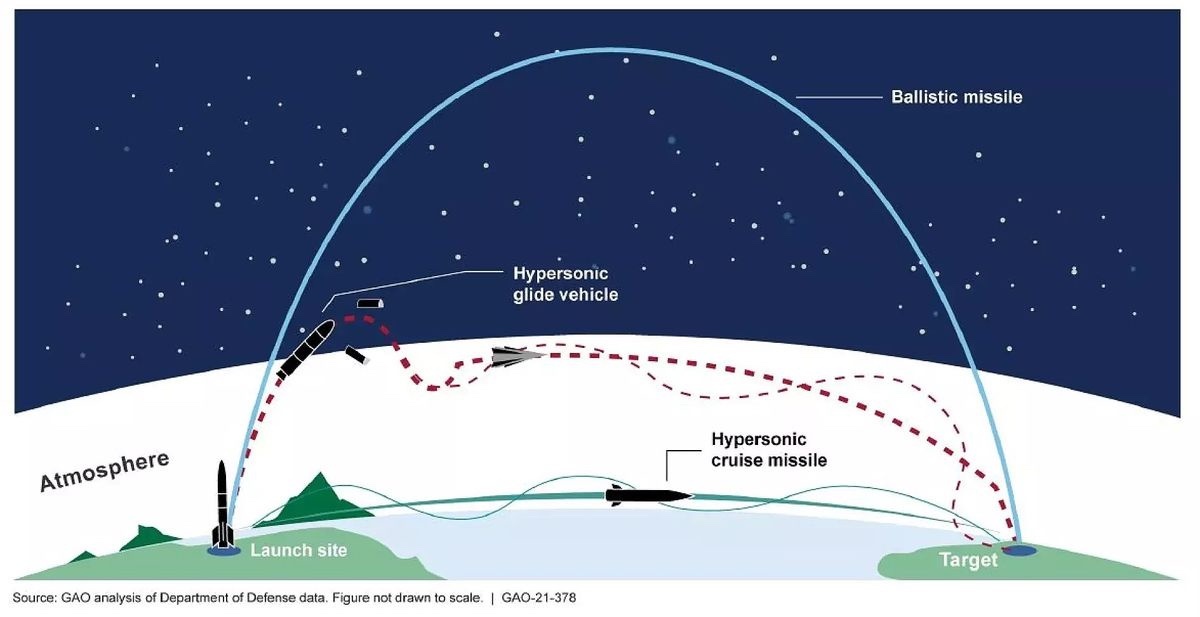7.09.2023
Three launches set this week from the Cape. Is one a DoD hypersonic missile weapons test?
Launch activity from Cape Canaveral Space Force Station this week is seeing an uptick. As many as three launches are on deck through the weekend. However, one of them is unlike the others in that it could be a possible Department of Defense weapons test: the launch of a hypersonic missile.
According to safety warnings issued Tuesday by the Federal Aviation Administration and National Geospatial-Intelligence Agency, some kind of space operation is expected from Cape Canaveral Space Force Station on Wednesday, but none of the active launch providers — NASA, SpaceX, and United Launch Alliance — have any missions scheduled for liftoff.
All signs point to a DoD weapons test:
A notice to airmen of a temporary flight restriction issued by the FAA Tuesday morning states that "no pilots may operate an aircraft in the areas," which stretch from NASA's Kennedy Space Center south to Cape Canaveral Space Force Station and east over the Atlantic Ocean. The restriction is scheduled to be in effect Wednesday between 9:30 a.m. and 1:30 p.m. EDT.

The closed air space also aligns with an area of "hazardous operations" cited by the National Geospatial-Intelligence Agency during roughly the same time window. Both of these types of warnings are typically put in place ahead of any launch activity from Florida's Space Coast.
This comes after the Army and Navy's joint attempt to launch a hypersonic missile from the Cape in March was scrubbed by the Department of Defense.
"On March 5, the Department of Defense planned to conduct a flight test from Cape Canaveral Space Force Station to inform the department's hypersonic technology development," the Office of the Secretary of Defense told FLORIDA TODAY. "As a result of pre-flight checks, the test did not occur."

What to know about hypersonic missiles:
Hypersonic missiles fly at Mach 5 or faster, or at least five times the speed of sound.
Due to security concerns, the Secretary of Defense's office said it was unable to confirm the exact type of hypersonic system deployed for the Cape test that had scrubbed. The Army, however, has been testing its Long-Range Hypersonic Weapon system, or LRHW, at sites across the country for several years.
“In terms of air defenses, they present an almost insurmountable problem to take them down with traditional air defenses. That's why they're so important to the military,” said John Cain, professor emeritus with the Florida Institute of Technology’s College of Aeronautics.
“You can't hit a hypersonic missile if it's going away from you. It’ll flat outrun anything,” he said.
Cain is a retired U.S. Air Force colonel who served as a USAF Weapons School instructor pilot at Nellis Air Force Base in Nevada, and he flew supersonic F-100 Super Sabres, F-16 Fighting Falcons and F-111 Aardvarks during his military career.

“It’s really hard to shoot down,” he said of a hypersonic missile. “Mach 5 is about 3,800 miles an hour. It's about 63 miles a minute. It's about a mile every second.”
At those speeds, Cain said rigorous testing is critical for DoD and NASA to develop effective engines, heat-resistant construction and accurate avionics.
“The aerodynamic surfaces are so critical. I mean, if you were to have one of them inadvertently move an eighth of an inch, it would spin the missile out of control at those speeds,” Cain said.
The Naval Ordnance Test Unit based at Port Canaveral also conducts missile tests, but those are usually launched from submarines at sea.
Quelle: Florida Today
----
Update: 9.09.2023
.

